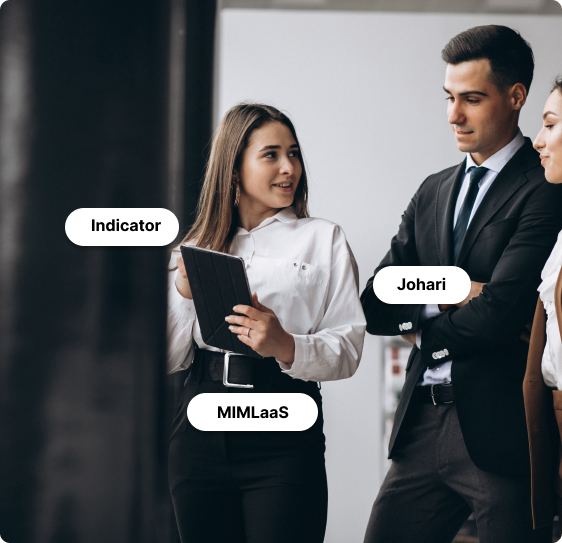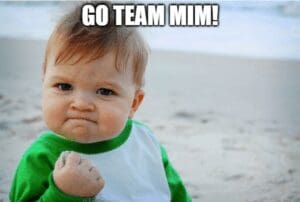Mastering Leadership 3.0: A Conscious Approach for the Modern Leader
MiM’s View
Leadership 3.0 is not just a new leadership model—it’s a conscious approach that responds to the challenges of today’s world by cultivating self-awareness, empathy, inclusivity, and strategic foresight. Leaders who embrace these principles are not only better equipped to navigate complexity but also to inspire and empower their teams in ways that traditional models often overlook.
By mastering the qualities of a self-aware, inclusive, mindful, collaborative, strategic, responsive, empathetic, and forward-thinking leader, one can truly embody the spirit of Leadership 3.0—leading with intention, authenticity, and a focus on long-term impact.
Leadership 3.0 isn't just about leadership today; it’s about shaping the future, one decision at a time.
Today, leadership is undergoing a transformation. Gone are the days when being a leader simply meant managing tasks or delegating responsibilities. The modern leader must possess an acute awareness of themselves and those around them, ensuring their actions are both purposeful and adaptive. Leadership 3.0 embraces this evolution, positioning itself as a model that fosters conscious leadership—where self-awareness, empathy, inclusion, and strategic insight sit at the core of effective leadership.
At the heart of Leadership 3.0 lies a series of essential qualities and competencies, each contributing to the creation of a well-rounded, forward-thinking leader. These qualities are encapsulated in the following modules:
- Self-Aware Leader
- Inclusive Leader
- Mindful Leader
- Collaborative Leader
- Strategic Leader
- Responsive Leader
- Empathetic Leader
- Innovative Leader
- Forward-Thinking Leader
Let’s take a closer look at each, exploring how they shape the leaders of tomorrow.
Self-Aware Leader: The Cornerstone of Effective Leadership
Self-awareness is the bedrock of Leadership 3.0. A leader who is fully in tune with their emotions, motivations, strengths, and weaknesses is better equipped to make decisions aligned with their core values. In essence, this awareness ensures that actions are intentional, and not driven by reactive impulses or unexamined biases.
A self-aware leader is reflective, always seeking to understand how their behaviours impact others. This introspective approach allows them to manage their responses effectively, creating an environment where integrity is palpable and trust is naturally cultivated.
Moreover, self-awareness opens the door to growth. Leadership is, after all, a journey, not a destination. The self-aware leader is unafraid of feedback, recognising its value in personal and professional development. This ability to reflect and evolve creates a culture of learning within their teams, where adaptability becomes second nature.
Inclusive Leader: Valuing Diversity and Creating Belonging
An inclusive leader understands that diversity is not just a buzzword but a powerful asset. In the framework of Leadership 3.0, inclusion is about more than just representation—it’s about fostering a culture where every voice, regardless of background or experience, is genuinely valued.
The inclusive leader is acutely aware of both conscious and unconscious biases and takes proactive steps to ensure they do not influence decision-making. This leader actively seeks out diverse perspectives, knowing that these differing viewpoints are key to fostering innovation and improving problem-solving.
However, inclusion doesn’t stop at acknowledging differences. The inclusive leader ensures that all team members feel a sense of belonging. This means creating opportunities for participation, ensuring that everyone has a seat at the table and is empowered to contribute. By fostering this environment, leaders build teams that are not only more innovative but more engaged and committed.
Mindful Leader: Staying Present
Mindfulness is more than a trendy concept; for leaders, it’s a critical tool. A mindful leader is fully present, aware of their thoughts, emotions, and surroundings, which enhances their ability to respond rather than react. Leadership 3.0 places a premium on mindfulness because it fosters clarity, composure, and focus—qualities essential for leading in a fast-paced, ever-changing world.
Mindful leaders listen with intent, paying full attention to the needs of their teams. This practice builds trust and ensures that decisions are made based on a deep understanding of the situation, rather than superficial assumptions or rushed judgments.
In times of stress or complexity, the mindful leader’s ability to pause, reflect, and then respond with intention is a defining quality. It’s this approach that helps them navigate challenges with a calm focus, making them both resilient and reliable in the eyes of their team.
Collaborative Leader: Harnessing the Power of Collective Intelligence & Intention
Leadership 3.0 recognises that in today's interconnected world, collaboration is not just a nice-to-have, but an essential. The collaborative leader understands that the collective intelligence of a team far exceeds the insights of any one individual.
A collaborative leader builds trust across teams by promoting openness, fostering dialogue, and breaking down silos that limit cross-functional interaction. They act as facilitators rather than directive managers, guiding conversations that ensure everyone’s perspective is heard.
Collaboration is about more than just working together—it’s about creating synergy. Leaders in this mould understand the importance of trust, respect, and communication. They know that by creating the right conditions, teams can produce innovative solutions that push the boundaries of what's possible.
Strategic Leader: Balancing Vision with Practicality
A strategic leader in the Leadership 3.0 framework combines visionary thinking with practical execution. These leaders are adept at looking beyond the immediate and considering how decisions made today will shape the organisation’s future.
But strategic leadership isn’t just about big-picture thinking. It’s also about being grounded in the present and making practical choices that guide the team towards long-term objectives. Strategic leaders are always assessing the external environment—whether it’s market trends, shifts in technology, or competitor behaviour—ensuring that they are not only reacting to the present but anticipating the future.
Leadership 3.0 encourages leaders to be forward-looking, but with a flexible mindset. Plans change, and a strategic leader is comfortable with pivoting when necessary, ensuring that the overall mission remains intact, even as circumstances evolve.
Responsive Leader: Agility in Leadership
Agility is the name of the game for the responsive leader. In Leadership 3.0, responsiveness is about being able to quickly and effectively adapt to changing circumstances while maintaining focus on the organisation's core mission.
A responsive leader doesn’t merely react to challenges; they anticipate them. Whether it’s responding to market shifts, addressing emerging needs within the team, or seizing an unexpected opportunity, this leader is always prepared to act swiftly without losing sight of long-term objectives.
Being responsive also means being attuned to the needs of those around you. These leaders excel at recognising when immediate action is required and when a more measured approach will yield better results. Their agility allows them to navigate uncertainty with confidence, ensuring the team remains focused, motivated, and capable of meeting new challenges head-on.
Empathetic Leader: Connecting with Compassion
Empathy may be one of the most undervalued qualities in leadership, but in Leadership 3.0, it’s indispensable. An empathetic leader can step into the shoes of their team, understanding their challenges, frustrations, and motivations. Empathy doesn’t just foster connection—it builds trust and loyalty.
An empathetic leader listens, not to respond, but to understand. This deep understanding shapes their interactions and decisions, ensuring that they consider not only what is best for the organisation but also what is best for their people. When employees feel understood and supported, their commitment to the organisation and its goals naturally increases.
Empathy also allows leaders to navigate difficult conversations with sensitivity, resolve conflicts with care, and lead with compassion. It humanises the workplace, creating an environment where individuals feel valued not just for their contributions but for who they are.
Innovative Leader: Pioneering Change with Creativity and Courage
Today, innovation is essential to staying relevant and ahead of the curve. The Innovative Leader within the Leadership 3.0 framework is driven by a relentless curiosity and the courage to push boundaries. These leaders actively foster a culture where creativity thrives, encouraging their teams to explore new ideas, take calculated risks, and learn from experimentation. They understand that innovation isn't just about technology or new products—it's about finding novel ways to solve problems, improve processes, and add value in unexpected ways. With a forward-looking mindset, innovative leaders inspire their teams to reimagine what's possible, setting the stage for transformative breakthroughs that drive sustained growth and keep the organisation agile in an ever-evolving marketplace.
Forward-Facing Leader: Innovating for the Future
In the fast-paced, technology-driven world we inhabit, being forward-thinking is crucial. The forward-thinking leader isn’t content with maintaining the status quo; they are constantly looking ahead, anticipating future challenges and seizing opportunities for innovation.
This leader encourages their team to think creatively, pushing boundaries and exploring new ideas. In Leadership 3.0, the forward-thinking leader is willing to take calculated risks, recognising that the greatest innovations often arise from the boldest ideas. But being forward-thinking is not just about innovation for its own sake. These leaders understand that the future of the organisation is shaped by every decision made today, and they are committed to creating sustainable growth.
By fostering a culture of experimentation and continuous improvement, the forward-thinking leader ensures that their organisation remains not only relevant but ahead of the curve in a rapidly evolving world.
If this article interests you and you would like to book the 12-month Conscious Leadership Programme - click here!
Author

Julie McCann
CEO and Founder of Masters in Minds.

Listen to our podcast on Spotify- Click here!














